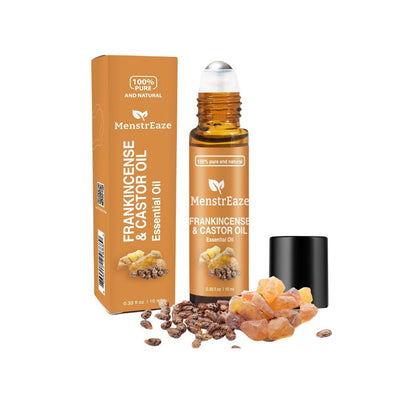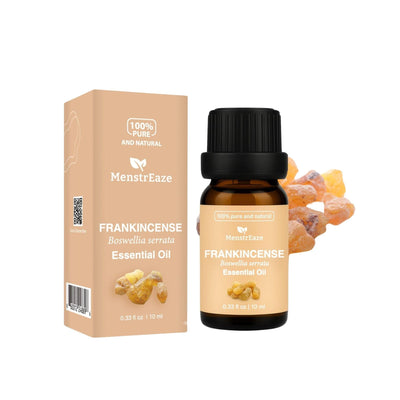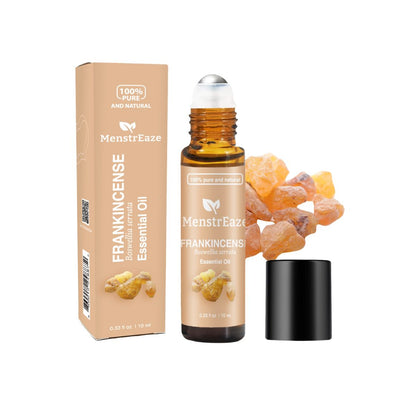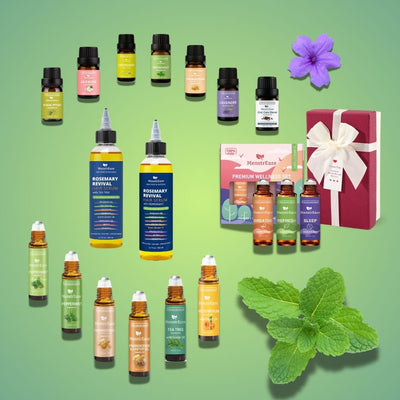I. Introduction: The Allure of Natural Radiance
The quest for healthy, radiant skin often leads down paths filled with complex ingredients and confusing claims. In this landscape, the allure of natural solutions grows stronger, with many seeking simpler, plant-derived options. Essential oils, potent aromatic extracts from plants, represent such a pathway, offering a connection to botanical traditions used for centuries to enhance beauty and well-being [1]. Their resurgence in modern wellness speaks to a desire for ingredients that feel both effective and grounded in nature.
This guide serves as a map through the fragrant world of essential oils for skincare. It explores some of the most beneficial oils frequently cited for addressing common women's skin concerns – from the quest for youthful vitality and managing breakouts to soothing sensitivity and boosting hydration. It delves into how these oils work, comparing their strengths for different skin types. Crucially, it provides practical, step-by-step guidance on incorporating them safely into a skincare routine, covering vital topics like dilution, carrier oils, and application techniques. The aim is to offer reliable, accessible advice for harnessing the power of these botanical extracts.
However, embarking on this journey requires a foundational understanding: while natural, essential oils are highly concentrated and demand respect. Their potency is their power, but also necessitates careful handling. Two non-negotiable principles underpin their safe topical use: dilution and patch testing. Essential oils should virtually always be diluted in a suitable base before touching the skin [8], and a patch test is crucial to check for individual reactions before wider application [8]. Furthermore, the quality of the oil significantly impacts both its potential benefits and safety profile [20]. These essential safety practices will be explored in detail, ensuring this exploration of natural radiance is both beautiful and responsible.
II. The Science Behind the Scent: How Essential Oils Benefit Your Skin
Essential oils offer far more than just pleasing aromas; they are intricate chemical cocktails derived from various plant parts like leaves, flowers, bark, and roots [12]. These volatile compounds are incredibly concentrated – it can take around 250 pounds of lavender flowers to yield just one pound of essential oil, or a staggering 5,000 pounds of rose petals for a pound of precious rose oil [23]. This concentration underscores why understanding their properties and using them correctly is paramount. Their benefits for the skin stem from a range of scientifically observed properties.
Several key properties make essential oils valuable allies in skincare routines:
- Antioxidant Power: Our skin is constantly battling free radicals – unstable molecules generated by factors like sun exposure, pollution, and even normal metabolic processes [4]. These free radicals damage skin cells, accelerating signs of aging like wrinkles, fine lines, and sunspots [3]. Antioxidants neutralize these damaging molecules [26]. Many essential oils are rich in antioxidant compounds, helping to protect the skin from this oxidative stress and maintain a more youthful appearance [3]. Notable examples include Frankincense [4], Lavender [3], Rose [3], Sandalwood [24], Lemon [20], Clary Sage [20], Ylang Ylang [3], Helichrysum [33], Pomegranate [3], Rosemary [3], Geranium [24], Carrot Seed [20], Oregano [28], Thyme [32], Eucalyptus [32], and Lemongrass [30].
- Anti-Inflammatory Action: Inflammation is the body's natural response to injury or irritation, but chronic or excessive inflammation contributes to various skin woes, including acne breakouts, redness, sensitivity, puffiness, and even accelerated aging [4]. Certain essential oils possess potent anti-inflammatory properties, helping to soothe the skin and calm these responses [3]. They can work by inhibiting the production of pro-inflammatory mediators like cytokines (e.g., TNF-α, IL-6, IL-1β), prostaglandins, and enzymes such as 5-lipoxygenase, which drive the inflammatory cascade [29]. Oils frequently cited for their anti-inflammatory effects include Lavender [4], Tea Tree [27], Frankincense [2], Chamomile [1], Sandalwood [3], Helichrysum [3], Geranium [2], Patchouli [2], Neroli [37], Rose [3], Rosemary [32], Thyme [32], Oregano [28], Cinnamon [27], Eucalyptus [23], Lemongrass [27], Peppermint [23], and Curcuma [29].
- Antimicrobial Effects: Keeping the skin's microbiome balanced is crucial for clarity and health. Certain essential oils exhibit antimicrobial activity, meaning they can inhibit or kill microorganisms like bacteria and fungi [1]. This is particularly relevant for managing acne, as oils like Tea Tree, Rosemary, Thyme, and Oregano have shown effectiveness against Cutibacterium acnes (formerly Propionibacterium acnes), a key bacterium implicated in breakouts [32]. These properties can help cleanse the skin, reduce blemishes, and prevent minor skin infections [23]. Other oils with noted antimicrobial or antiseptic qualities include Lavender [4], Cinnamon [27], Frankincense [2], Lemon [32], Eucalyptus [23], Lemongrass [23], Bergamot [45], Basil [36], Neroli [34], Clary Sage [34], Geranium [34], Sandalwood [29], Peppermint [23], Juniper Berry [44], and Cedarwood [23].
- Other Beneficial Actions: Beyond these core properties, essential oils can offer additional skin benefits. Many contribute to hydration and moisturizing, helping to combat dryness and maintain skin suppleness [1]. Some possess astringent properties, helping to tone the skin and potentially minimize the appearance of pores [2]. Certain oils are noted for promoting skin cell turnover and regeneration, which is key for healing, reducing scars, and maintaining a fresh, vibrant complexion [2]. Others help balance sebum (oil) production, beneficial for both oily and dry skin types [2]. There's also evidence suggesting some oils can boost collagen production, crucial for skin firmness and elasticity [3].
It's interesting to observe that research frequently highlights the use of essential oil blends [5] and the combination of essential oils with beneficial carrier oils [6]. This points towards a potential for synergy, where the combined effects of multiple oils might surpass the benefits of using a single oil alone. For instance, combining an antimicrobial oil like Tea Tree with a soothing carrier like Aloe Vera has shown enhanced results [35]. This suggests that thoughtful combinations, tailored to address multiple facets of a skin concern, could offer a more holistic approach.
While the potential benefits are compelling, it's also important to approach claims with a discerning eye. The scientific backing for essential oil use in skincare varies. Some properties, like the antimicrobial action of Tea Tree oil for acne, are supported by clinical trials involving humans [35]. However, many other claims rely on laboratory (in vitro) studies, animal research, or traditional use [3]. While these studies are valuable for identifying potential benefits and mechanisms (like the anti-inflammatory action of boswellic acid in Frankincense [4] or the irritation-reducing effects of neryl acetate in Helichrysum [1]), they don't always translate directly to human skin application. Some sources explicitly note the lack of robust human evidence for certain claims [3]. Therefore, maintaining realistic expectations is key; essential oils show significant promise, but not all purported benefits carry the same weight of scientific proof for topical human use.
III. Meet the Skin Stars: Top Essential Oils for Women's Skin
While the world of essential oils is vast, with dozens potentially offering skin benefits [8], a select group consistently emerges in research and traditional use for addressing common concerns faced by women. Let's explore some of these "star players," focusing on those most frequently cited for their versatility and documented properties.
1. Lavender (Lavandula angustifolia): The Gentle All-Rounder
- Benefits: Lavender is perhaps the most versatile and widely recognized essential oil. It excels at calming the mind and the skin, soothing irritation like redness, itchiness, and even sunburn [2]. It offers hydration [14] and promotes the healing of minor cuts and burns [25]. Lavender helps balance the skin [38] and is often used to manage acne or blemishes [8], potentially reducing associated scarring by promoting tissue regeneration [35]. Its antioxidant properties also lend support against signs of aging [3], with some research suggesting it can stimulate collagen [4].
- Properties: Its benefits stem from potent anti-inflammatory [4], antioxidant [3], and antimicrobial/antiseptic actions [4]. Key active compounds like linalool and linalyl acetate are known contributors to its therapeutic effects [4].
- Best For: Its gentle nature makes it suitable for virtually all skin types, particularly sensitive [2], irritated [2], stressed [3], acne-prone [35], and mature skin [27].
- Sources: [1]
2. Tea Tree (Melaleuca alternifolia): The Blemish Buster
- Benefits: Tea Tree oil is renowned for its effectiveness against acne and blemishes [2]. It helps reduce excess oiliness [14] and calms the inflammation associated with breakouts [35]. Its ability to aid wound healing makes it beneficial for pimples that may have been picked [34]. It's also used for fungal issues like athlete's foot [23].
- Properties: Its power lies in strong antimicrobial and antibacterial properties, particularly against the acne-causing bacterium C. acnes [2]. It also acts as an antiseptic [2], anti-inflammatory [27], and antifungal agent [23]. The compound terpinene-4-ol is often highlighted as a key active component [38].
- Best For: Oily, acne-prone, and combination skin types benefit most [2]. Due to its potency, caution is advised for sensitive skin, as some may find it too strong [40].
- Sources: [1]
3. Frankincense (Boswellia species): The Rejuvenator
- Benefits: Often called the "king of oils" [1], Frankincense is celebrated for its anti-aging capabilities. It helps reduce the appearance of wrinkles and fine lines [3], improve skin elasticity [4], and tone the skin [3]. It's also noted for reducing sunspots and age spots [3] and promoting the regeneration of new skin cells [2]. Additionally, it soothes inflammation [2] and can help balance oil production [2].
- Properties: It exhibits anti-inflammatory [2], antioxidant [4], and astringent properties [25]. Research suggests it promotes collagen synthesis [4] and is cell-regenerative [2]. Active compounds like boswellic acids are key to its anti-inflammatory and collagen-boosting effects [4], while others like limonene and alpha-pinene contribute antioxidant and anti-inflammatory benefits [4].
- Best For: Particularly beneficial for mature and aging skin [3], but also suitable for oily [2], sensitive [27], and sun-damaged skin [3].
- Sources: [1]
4. Rose (Rosa damascena, others): The Luxurious Hydrator
- Benefits: Rose oil, often called the "queen of flowers" [42], is prized for its ability to deeply hydrate and moisturize the skin [1]. It's exceptionally soothing for sensitive or irritated complexions [14] and helps reduce redness [20]. By promoting a youthful appearance [6] and balancing moisture levels [1], it contributes to overall skin health. Its ability to encourage skin cell turnover aids in renewal and may help fade minor scars or dark spots [3]. Due to the vast amount of petals needed for extraction, pure rose oil is often one of the more expensive essential oils [24].
- Properties: Rose oil possesses antioxidant [3], anti-inflammatory [3], and antibacterial qualities [3]. It's highly moisturizing [1] and promotes cell turnover [3]. Some sources mention it contains Vitamins A and C [6], although [6] specifically refers to Rosehip oil, a carrier oil derived from rose seeds, which is distinct but also rich in these vitamins.
- Best For: Ideal for dry, mature, and sensitive skin types [8].
- Sources: [16].
5. Chamomile (Roman - Anthemis nobilis; German - Matricaria recutita): The Calming Comfort
- Benefits: Chamomile is renowned for its profound calming effects, making it a balm for sensitive and easily irritated skin [1]. It effectively reduces redness and inflammation [37] while providing moisture [14]. Its gentle nature also promotes relaxation, benefiting both skin and mood [1]. German Chamomile is noted for its blue hue, derived from the anti-inflammatory compound azulene formed during distillation [37].
- Properties: Its primary strength lies in potent anti-inflammatory action [29], alongside significant soothing [1] and moisturizing capabilities [14]. Key active compounds contributing to its anti-inflammatory prowess include azulene and bisabolol [37].
- Best For: A top choice for sensitive, irritated, and inflamed skin conditions [37], as well as dry skin [39].
- Sources:.132
6. Geranium (Pelargonium graveolens): The Balancer
- Benefits: Geranium oil is a great harmonizer for the skin, known for balancing sebum production, making it beneficial for both dry and oily conditions [27]. It helps tone the skin [2], improve elasticity [39], and promote a more vibrant, youthful complexion [2]. It's also helpful for managing acne and skin irritation [34] and may aid in fading scars due to potential collagen-boosting effects [24].
- Properties: Geranium possesses antibacterial, antiseptic, and antimicrobial properties [34], along with anti-inflammatory effects [37]. It acts as an astringent [39], helps balance sebum [27], and potentially supports collagen production [24]. The active compound Geraniol is mentioned as a key component [40].
- Best For: Suitable for most skin types, it's particularly noted for mature [2], dry [2], oily [27], combination, and acne-prone skin [34]. A patch test is often recommended for those with sensitive skin [37].
- Sources: [2]
7. Sandalwood (Santalum album/spicatum): The Soothing Moisturizer
- Benefits: Sandalwood oil provides excellent moisture due to its natural emollient content, helping skin retain water [3]. It's well-known for reducing inflammation, making it useful for conditions like eczema [3]. It encourages skin cell turnover [3], minimizes the look of imperfections [1], and contributes to a smooth, healthy complexion [1]. Its rich, earthy scent is also popular for relaxation [24]. Australian Sandalwood (Santalum spicatum) is frequently mentioned as a sustainable option [47].
- Properties: Key properties include anti-inflammatory [3], moisturizing/emollient [3], astringent (promoting cell turnover) [3], antioxidant [24], and antimicrobial [29]. The active compound Santalol is linked to its beautifying effects [1].
- Best For: Highly beneficial for dry and mature skin [3], as well as sensitive [27] and inflamed skin [3].
- Sources: [1]
8. Helichrysum (Helichrysum italicum): The Regenerative Healer
- Benefits: Often referred to by names like "Immortelle" or "Everlasting" [33], and sometimes even "Botox in a bottle" [24], Helichrysum is famed for its skin regenerative and renewal properties [1]. It helps reduce the appearance of wrinkles and promotes a glowing, youthful complexion [1]. It's effective at reducing skin irritations and inflammation [1] and can diminish the appearance of blemishes [1] and scars [38].
- Properties: Helichrysum possesses anti-inflammatory [3], antioxidant [33], antimicrobial [33], and antiseptic qualities [3]. Its most lauded property is its regenerative capacity [1]. The active compound Neryl acetate is specifically cited for its ability to reduce skin irritations [1].
- Best For: Excellent for mature and aging skin [1], sensitive skin [37], and skin that is damaged or scarred [38].
- Sources: [1]
Other Notable Mentions: Ylang Ylang is often cited for balancing sebum production [2] and moisturizing [14]. Neroli (from bitter orange blossoms) is suggested to help rebuild elasticity and generate new skin cells [3]. Rosemary offers benefits for circulation and acne management [2]. Patchouli is noted for toning and soothing irritated skin [2]. Citrus oils like Lemon and Orange can offer brightening effects due to antioxidant properties [14], but require significant caution regarding photosensitivity (discussed later).
Table 1: Quick Reference Guide: Top Essential Oils for Skin
|
Oil Name |
Key Benefit(s) |
Primary Properties |
Best For Skin Type(s) |
|
Lavender |
Calming, Soothing, Healing, Balancing |
Anti-inflammatory, Antimicrobial, Antioxidant |
All, esp. Sensitive, Irritated, Acne, Mature |
|
Tea Tree |
Anti-Acne, Oil Control, Cleansing |
Antimicrobial, Antiseptic, Anti-inflammatory |
Oily, Acne-Prone, Combination |
|
Frankincense |
Anti-Aging, Rejuvenating, Toning, Balancing |
Anti-inflammatory, Antioxidant, Astringent, Regenerative |
Mature, Aging, Oily, Sensitive, Sun-Damaged |
|
Rose |
Hydrating, Soothing, Anti-Aging |
Moisturizing, Anti-inflammatory, Antioxidant |
Dry, Mature, Sensitive |
|
Chamomile |
Calming, Soothing, Anti-Redness |
Anti-inflammatory, Soothing, Moisturizing |
Sensitive, Irritated, Inflamed, Dry |
|
Geranium |
Balancing (Oil), Toning, Anti-Aging |
Sebum-Balancing, Astringent, Antimicrobial |
All, esp. Mature, Dry, Oily, Combination, Acne |
|
Sandalwood |
Moisturizing, Soothing, Smoothing |
Anti-inflammatory, Moisturizing, Astringent |
Dry, Mature, Sensitive, Inflamed |
|
Helichrysum |
Regenerative, Anti-Aging, Healing (Scars) |
Anti-inflammatory, Regenerative, Antioxidant |
Mature, Aging, Sensitive, Damaged, Scarred |
IV. Your Skin's Perfect Match: Essential Oils for Every Type
Understanding your skin type is the first step toward selecting the most beneficial essential oils. Using an oil suited for dry skin on an already oily complexion, for example, might be counterproductive, while sensitive skin requires particularly gentle choices to avoid irritation [2].
Oily / Acne-Prone Skin
- Needs: This skin type struggles with excess sebum production, leading to shine, clogged pores, and breakouts. The goals are to balance oil, fight acne-causing bacteria (C. acnes), reduce inflammation, and use non-comedogenic (non-pore-clogging) ingredients.
- Recommended EOs: Tea Tree is a star player due to its potent antimicrobial and anti-inflammatory action [2]. Rosemary [2], Thyme [32], Oregano [32], and Cinnamon [27] (use very diluted due to potential irritation) also offer strong antibacterial properties against acne bacteria. Clary Sage [27] and Geranium [27] help balance sebum production. Lavender offers gentle anti-inflammatory and antibacterial support [8]. Frankincense can help balance oil and soothe [2]. Bergamot [35] and Lemon/Lemongrass [14] have cleansing and astringent properties but require caution due to photosensitivity. Juniper Berry [44] and Eucalyptus [14] also show promise. Palmarosa is another balancing option [2].
- Recommended Carrier Oils: Opt for lightweight, non-comedogenic oils. Jojoba is excellent as it mimics natural sebum [2]. Grapeseed is light and astringent [37]. Hemp Seed oil helps balance oil and reduce inflammation [50]. Rosehip oil, despite being an oil, is often recommended for acne due to its high linoleic acid content, vitamin A, and healing properties [2]. Safflower oil is another very low-comedogenic option [64]. Argan oil can also help regulate sebum [61]. Look for oils with low comedogenic ratings (0-2) and often higher linoleic acid content, which is thought to be beneficial for oily/acneic skin [35].
Dry / Mature Skin
- Needs: This skin type lacks moisture and natural oils, often feeling tight, flaky, and prone to fine lines and wrinkles. Mature skin also deals with reduced elasticity and collagen. The focus is on deep hydration, nourishment, boosting elasticity, reducing wrinkle appearance, and providing antioxidant protection.
- Recommended EOs: Rose [8] and Sandalwood [3] are excellent choices for hydration and soothing. Frankincense [3], Helichrysum [1], Myrrh [5], and Neroli [3] are powerhouses for anti-aging, promoting regeneration and elasticity. Lavender provides gentle hydration and healing [14]. Geranium helps balance and improve elasticity [2]. Ylang Ylang helps balance oil and regenerate skin [2]. Patchouli [2] and Carrot Seed [24] offer regenerative benefits. Chamomile [14] and Cedarwood [39] provide soothing moisture.
- Recommended Carrier Oils: Choose richer, more emollient oils packed with fatty acids and vitamins [50]. Avocado oil offers deep nourishment [39]. Coconut oil (Fractionated stays liquid, Virgin is solid but melts) provides intense moisture [8]. Olive oil is a classic emollient [50]. Sweet Almond oil is nourishing yet relatively gentle [37]. Argan oil ("liquid gold") is rich in Vitamin E and fatty acids, excellent for hydration and elasticity [2]. Rosehip Seed oil is famed for regeneration and tackling wrinkles and age spots [6]. Jojoba [68], Vitamin E oil [70], Evening Primrose [51], Borage [51], Moringa [51], Sea Buckthorn [50], and Pomegranate Seed oil [25] are other beneficial options.
Sensitive Skin
- Needs: This skin type reacts easily to products or environmental factors, often showing redness, itching, or irritation. It requires extremely gentle, soothing, anti-inflammatory ingredients that support the skin's natural barrier function. Hypoallergenic options are preferred.
- Recommended EOs: Lavender [2] and Chamomile (Roman or German) [1] are top choices for their calming and anti-inflammatory prowess. Frankincense [27], Sandalwood [27], Rose [14], and Helichrysum [37] are also generally well-tolerated and offer soothing and regenerative benefits. Neroli [37] and Patchouli [2] can be suitable as well. Geranium might be used, but a patch test is strongly advised [37]. It's crucial to avoid potentially irritating oils like Cinnamon, Clove, Lemongrass, Peppermint, Oregano, and Thyme [2].
- Recommended Carrier Oils: Focus on mild, gentle, and hypoallergenic oils [50]. Sweet Almond [37] and Apricot Kernel [39] are excellent starting points. Jojoba is often well-tolerated due to its similarity to skin sebum [2]. Rosehip [37], Grapeseed [37], Argan [40], and Hemp Seed [40] are other good options. Calendula-infused oil is known for calming inflammation [50]. Avocado [71], Oat [69], Baobab [51], Sesame [69], and Evening Primrose oils [62] can also be considered.
Combination Skin
- Needs: This common skin type features characteristics of both oily skin (usually in the T-zone: forehead, nose, chin) and dry or normal skin (often on the cheeks). The goal is to balance oil production in oily areas while providing adequate hydration to drier zones, using non-comedogenic products overall.
- Recommended EOs: Balancing oils are key. Geranium is excellent for harmonizing sebum production [27]. Lavender offers gentle balancing and soothing [38]. Frankincense helps tone [3]. Ylang Ylang [2] and Clary Sage [27] are also known for their balancing effects. It may be beneficial to apply oils suited for oily skin (like Tea Tree, used sparingly) to the T-zone and oils for drier skin to the cheeks, or choose versatile balancing oils for the whole face.
- Recommended Carrier Oils: Jojoba oil is ideal for its balancing properties [50]. Grapeseed oil is lightweight and suitable for the oilier T-zone [50]. Argan oil can provide hydration for drier areas [50]. Hemp Seed [66] and Rosehip oil [66] also offer balancing benefits. Mixing carrier oils might be a good strategy to address the different needs of combination skin [50].
It becomes evident that the choice of carrier oil is not merely about dilution; it's an integral part of the skincare strategy. Carrier oils are active participants, bringing their own unique profiles of vitamins (like A, C, E), essential fatty acids (like linoleic and oleic acid), and anti-inflammatory compounds to the blend [6]. Rosehip oil, for instance, contributes regenerative vitamin A and C [6], while Jojoba oil's structure closely mimics the skin's own sebum, aiding balance [25]. Selecting a carrier oil that complements the chosen essential oil and suits the specific skin type transforms simple dilution into a more targeted and potentially more effective formulation. This two-part selection process—choosing both the essential oil and the appropriate carrier—is key to optimizing results safely.
V. Your Essential Toolkit: Mastering Safe & Effective Application
Harnessing the benefits of essential oils for skincare requires understanding not just which oils to use, but how to use them safely and effectively. Application methods are crucial for both maximizing results and minimizing potential risks.
The Golden Rule: Dilution, Dilution, Dilution!
This cannot be stressed enough: essential oils are highly concentrated plant essences and should almost never be applied "neat" (undiluted) directly to the skin [8]. Doing so significantly increases the risk of adverse reactions such as irritation, redness, burning sensations, or even sensitization (developing an allergy) [9]. Dilution serves two main purposes: it ensures safety by making the application gentler on the skin, and it aids in the even dispersion and absorption of the essential oil, preventing rapid evaporation and enhancing its effectiveness [9].
Choosing Your Carrier: The Essential Partner
- What are Carrier Oils? Carriers are the vehicles used to safely deliver essential oils to the skin. They are typically lipid-based substances like vegetable oils, nut oils, seed oils, or sometimes natural butters (like shea or cocoa butter, which need warming to liquefy) or waxes [8]. Importantly, carrier oils offer their own skin benefits, providing nourishment, moisture, vitamins, and fatty acids that complement the action of the essential oils [50]. Water-based substances like aloe vera gel or hydrosols are not true carriers for essential oils, as oil and water don't mix; if using these, a dispersant like Solubol is needed to keep the essential oil evenly distributed [11].
- Popular Choices: Many excellent carrier oils are available. Some of the most commonly mentioned and versatile include:
- Jojoba Oil: Mimics skin's sebum, great for balancing all skin types [25].
- Sweet Almond Oil: Gentle, nourishing (Vitamins A & E), good for dry and sensitive skin [37].
- Coconut Oil (Fractionated): Lightweight, liquid, absorbs well, moisturizing [50].
- Grapeseed Oil: Very lightweight, non-comedogenic, good for oily/acne-prone skin [37].
- Rosehip Seed Oil: Regenerative (Vitamins A & C), anti-aging, helps with scars and pigmentation [6].
- Argan Oil: Rich in Vitamin E, hydrating, improves elasticity, good for dry/mature skin [2].
- Avocado Oil: Very rich, deeply moisturizing, good for very dry/mature skin [39].
- Olive Oil: Emollient, moisturizing, readily available [50].
- Hemp Seed Oil: Balancing, anti-inflammatory, rich in omegas [40].
Table 2: Carrier Oil Cheat Sheet
|
Carrier Oil |
Key Properties/Feel |
Comedogenic Rating (Approx.)* |
Best For Skin Type(s) |
|
Jojoba Oil |
Mimics sebum, balancing, moisturizing, light |
All, esp. Oily, Acne, Combo, Sensitive |
|
|
Sweet Almond Oil |
Nourishing (Vit E), gentle, softening |
2 |
Dry, Sensitive, Normal, Mature |
|
Coconut Oil (Fractionated) |
Lightweight, non-greasy, moisturizing, stable |
2-3 |
Dry, Normal (use cautiously on acne-prone) |
|
Grapeseed Oil |
Very lightweight, astringent, non-greasy |
Oily, Acne-Prone, Combination |
|
|
Rosehip Seed Oil |
Regenerative (Vit A/C), healing, relatively light |
Mature, Dry, Scarred, Acne-Prone, Combo |
|
|
Argan Oil |
Hydrating (Vit E), improves elasticity, non-greasy |
0 [64] |
Dry, Mature, Normal, Sensitive, Acne-Prone |
|
Avocado Oil |
Rich, deeply moisturizing, nourishing (Vitamins) |
3 |
Very Dry, Mature |
|
Olive Oil |
Rich, emollient, moisturizing |
2-3 |
Dry, Mature |
|
Hemp Seed Oil |
Balancing, anti-inflammatory (Omegas), lightweight |
0 [64] |
Oily, Acne-Prone, Sensitive, Dry, Combo |
|
Apricot Kernel Oil |
Lightweight, gentle, moisturizing (Vit A/E) |
2 |
Sensitive, Dry, Mature, Normal |
|
Safflower Oil |
Very lightweight, high linoleic acid |
0 [64] |
Oily, Acne-Prone |
*Comedogenic ratings are on a scale of 0-5, where 0 is least likely to clog pores and 5 is most likely. Individual reactions can vary.
Getting the Ratios Right: A Simple Dilution Guide
Dilution is expressed as a percentage of essential oil in the total blend. While measuring by the drop isn't perfectly precise (drop sizes vary between oils and droppers [10]), it's practical for personal use. Common approximations are:
- 1% dilution ≈ 5-6 drops of essential oil per 1 ounce (30 ml) of carrier oil [9].
- 2% dilution ≈ 10-12 drops of essential oil per 1 ounce (30 ml) of carrier oil [10].
- 3% dilution ≈ 15-18 drops of essential oil per 1 ounce (30 ml) of carrier oil [9].
General Dilution Guidelines (based on expert recommendations [9]):
- Facial Application, Sensitive Skin, Daily Use: 0.5% to 1.5% (approx. 3 to 9 drops per ounce). This lower range minimizes risk on delicate facial skin or for those prone to reactions [9].
- General Body Application (Lotions, Massage Oils): 1% to 3% (approx. 6 to 18 drops per ounce). This is a standard range for products applied over larger areas of the body [10].
- Targeted Concerns (Spot Treatment, Acute Issues - Short-Term Use Only): 2% to 10% (approx. 12 to 60 drops per ounce). Higher concentrations should only be used on small, localized areas (like a single blemish) for a limited time (e.g., 2-3 weeks) [10]. For instance, a 5% dilution has shown effectiveness for acne spot treatment in some studies [74].
Important Note: Beginners should always start with the lowest recommended dilution (e.g., 1% or less) and only increase gradually if necessary and if the skin shows no signs of irritation [74]. More is not always better; effectiveness can plateau, while risk increases with concentration [74].
Application Techniques: Putting Your Oils to Work
Once properly diluted, essential oils can be incorporated into a routine in various ways:
- Facial Serums/Oils: Combine the chosen essential oil(s) and carrier oil in a small bottle. Apply just a few drops to cleansed, slightly damp skin, gently massaging it in. This can be done morning and/or night [1].
- Boosting Existing Products: Add 1-2 drops of essential oil to a single application of an unscented facial moisturizer, body lotion, or cleanser immediately before use [1]. Do not add essential oils directly to the entire bottle of product, as this can affect preservation and consistency.
- Spot Treatment: For individual blemishes, a slightly higher concentration (e.g., 5% [74]) can be applied directly to the spot using a clean cotton swab [2]. While Tea Tree oil is sometimes suggested for neat application in this way [23], dilution remains the safer general practice.
- Massage: Blend essential oils with a carrier oil for a therapeutic facial or body massage [8]. Follow appropriate body dilution guidelines (1-3%).
- Baths: This requires careful preparation. Essential oils do not mix with water and will float as concentrated droplets on the surface, which can cause significant irritation, especially in sensitive areas [13].Never add undiluted essential oils directly to bathwater. Instead, first disperse 3-6 total drops of essential oil(s) in a tablespoon of carrier oil, a cup of full-fat milk or cream, or a natural solubilizer like liquid castile soap or Solubol, then add this mixture to the running bathwater [9].
- Facial Steam: Add 1-2 drops of essential oil to a bowl of hot (not boiling) water. Lean over the bowl, drape a towel over the head and bowl to create a tent, and inhale the steam for several minutes (keeping eyes closed) [1]. This can help open pores before cleansing or applying treatments.
- Compresses: Add a few drops of diluted essential oil to a bowl of warm or cool water. Soak a clean cloth, wring it out, and apply it to the desired area [48].
The chosen application method significantly influences safety. Neat application is generally discouraged [9]. Baths require specific dispersion techniques to avoid irritation [13]. Even diffusion, while not topical, has guidelines for safe duration and ventilation [13]. Understanding the correct protocol for each method is as vital as selecting the right oil and dilution.
VI. Handle with Care: Essential Oil Safety Essentials
The power of essential oils lies in their concentration, but this potency demands respect and careful handling. Being natural does not equate to being automatically harmless [12]. Adhering to safety guidelines is paramount for enjoying the benefits without adverse effects.
The Patch Test: Your Personal Safety Check
Before applying a new essential oil or blend liberally, performing a patch test is a crucial first step [8]. This simple procedure helps identify potential skin irritation or allergic reactions (sensitization) specific to an individual [19]. Sensitization is an immune response that might not occur on the first exposure but can develop later, often resulting in a lifelong reaction to that specific oil [13].
- How to Perform a Patch Test:
- Dilute 1-2 drops of the essential oil in about half a teaspoon to a full teaspoon of a carrier oil (like jojoba or almond oil) [17].
- Apply a small dab of this diluted mixture to a discreet patch of skin, such as the inner elbow or wrist [15].
- Cover the area with a bandage and keep it dry [17].
- Wait for 24 to 48 hours, observing the area for any reaction [14]. The optimal waiting time is 48 hours [14].
- What to Look For: Signs of a reaction include redness, itching, burning sensation, blistering, rash, or swelling at the application site [17].
- If a Reaction Occurs: Immediately remove the bandage (if used), wash the affected area thoroughly with gentle soap and cool water, and apply a plain carrier oil (like coconut or olive oil) to help soothe and further dilute any remaining essential oil [17]. Discontinue use of the specific essential oil or blend that caused the reaction [17].
Sun Smarts: Understanding Photosensitivity
Certain essential oils, primarily those derived from citrus fruits, contain compounds called furanocoumarins (FCs) [63]. When these oils are applied to the skin (topically), FCs can make the skin dramatically more sensitive to ultraviolet (UV) light from the sun or tanning beds [11]. This interaction, known as phototoxicity, can lead to severe reactions resembling exaggerated sunburn, including intense redness, blistering, swelling, and potentially long-lasting changes in skin pigmentation [17]. The reaction might not appear immediately but can be delayed by hours or even days [76].
- Common Photosensitive Oils: The main culprits are typically cold-pressed or expressed citrus oils. These include Bergamot (considered the most potent photosensitizer [21]), Lemon, Lime, Grapefruit, and Bitter Orange [2]. Other oils or blends containing these may also pose a risk [77]. Always check product labels for warnings [77].Note: Steam-distilled citrus oils generally do not contain significant amounts of furanocoumarins and are therefore not considered photosensitive [49]. Sweet Orange and Mandarin essential oils are also typically safe regarding photosensitivity [49].
- Safety Precautions:
- Avoid UV Exposure: After applying photosensitive oils topically at concentrations higher than recommended safe levels, avoid direct sunlight and tanning beds for a minimum of 12-18 hours [21]. Some sources recommend up to 48 hours for certain oils [77].
- Timing: Use photosensitive oils in nighttime skincare routines rather than during the day [15].
- Coverage: If applying during the day, ensure the treated skin is completely covered by clothing that blocks UV rays [76].
- Wash-Off Products: Using photosensitive oils in products that are rinsed off the skin (like cleansers or shampoos) generally poses no risk [49].
- Safe Dilution Levels: Adhering to maximum recommended dilution levels for leave-on products significantly minimizes risk. For example, Tisserand and Young recommend maximums like 1 drop of Bergamot per ounce (0.4%), 12 drops of Lemon per ounce (2.0%), 4 drops of Lime per ounce (0.7%), and 24 drops of Grapefruit per ounce (4.0%) for safe topical use without time restrictions [49].
- Sunscreen: Using sunscreen is always advisable for sun protection, but it may not completely prevent a phototoxic reaction if photosensitive oils have been applied above safe levels [77]. Washing the area after application does not eliminate the risk [77].
Listen to Your Skin: Irritation vs. Allergy
It's important to distinguish between skin irritation and a true allergic reaction (sensitization):
- Irritation: This is a direct, non-immune reaction of the skin to a substance. With essential oils, it's often caused by using an oil undiluted, using too high a concentration, or applying it to damaged skin [13]. The reaction is usually localized to the application site and typically subsides relatively quickly once the oil is removed [13].
- Allergy (Sensitization): This involves the immune system recognizing the essential oil (or one of its components) as a foreign invader [13]. A reaction might not happen on the first exposure, but once sensitization occurs, the body is primed to react upon subsequent exposures, often for life [13]. Symptoms can include rash (contact dermatitis), hives, or in rare, severe cases, respiratory issues [12]. Oils sometimes associated with higher sensitization potential include Cinnamon, Clove, Ylang Ylang, Lemongrass, Jasmine, Chamomile, Bergamot, and Oregano [22].
If any adverse skin reaction occurs, stop using the implicated oil immediately [17].
Other Important Considerations
- Sensitive Areas: Never apply essential oils directly into the eyes, inner ears, or nose, or onto mucous membranes or genitals [12]. Use caution even with diluted oils near the eyes [13].
- Damaged Skin: Avoid applying essential oils to broken, injured, or inflamed skin, as this increases absorption and the risk of adverse reactions [12].
- Internal Use (Ingestion): Ingesting essential oils is generally not recommended and should only be done under the guidance of a healthcare professional specifically trained in internal use [12]. Many oils safe for topical or aromatic use can be toxic if swallowed [12]. Accidental ingestion by children is a serious risk [13].
- Pregnancy & Breastfeeding: Exercise extreme caution. Avoid essential oils entirely during the first trimester [60]. Certain oils are contraindicated throughout pregnancy as they may stimulate contractions or pose other risks [58]. Always consult with a doctor, midwife, or qualified aromatherapist before using any essential oils during pregnancy or while breastfeeding [21]. If approved, use very low dilutions (e.g., 1% or less) and prioritize inhalation (aromatherapy) over topical application [57]. Never ingest essential oils during this time [22]. Commonly considered safer options often include Lavender, Chamomile, Frankincense, Ginger, and some citrus oils [22].
- Children & Elderly: These groups tend to be more sensitive to essential oils and require significantly lower dilutions [9]. Certain oils should be avoided altogether in young children due to specific risks (e.g., Peppermint and Eucalyptus near the face due to potential breathing issues; Birch and Wintergreen due to methyl salicylate content, which carries a risk similar to aspirin) [12]. Always keep essential oil bottles securely out of reach of children [13].
- Medical Conditions: Individuals with pre-existing conditions like asthma, epilepsy, heart conditions, high blood pressure, or known allergies should consult their doctor before using essential oils [12]. Some oils may interact with medications or exacerbate certain conditions [12].
- Quality and Purity: The quality of essential oils varies greatly. Choose oils from reputable suppliers that provide information on purity, the plant's Latin name, and origin [12]. Avoid synthetic "fragrance oils" or oils diluted with undisclosed ingredients, as these are more likely to cause reactions and lack therapeutic benefits [12]. Pure essential oils are often sold in dark glass bottles to protect them from light degradation [22].
- Storage: Proper storage preserves the oil's quality and safety. Keep bottles tightly sealed, in a cool, dark place, away from direct sunlight and heat [12]. Keep them away from naked flames, as they are flammable [13]. Over time, exposure to oxygen causes oils to oxidize, which can make them less effective and increase the risk of skin sensitization [12]. Discard oils that have significantly changed in smell, color, or consistency, or are past their typical shelf life (which varies, but generally 1-3 years for many, less for citrus) [12].
Ultimately, safe essential oil use is highly context-dependent. It's not just about picking an oil and diluting it; it involves considering the specific oil's properties (like photosensitivity), the intended application method, the individual user's characteristics (age, skin sensitivity, health status, pregnancy), and ensuring the oil itself is of good quality and properly stored. A mindful, informed approach that considers all these factors is necessary to navigate the world of essential oils safely.
VII. Conclusion: Embrace Your Natural Glow, Safely
Essential oils offer a compelling, natural avenue for enhancing skin health and achieving a radiant glow. From the anti-aging prowess of Frankincense and Rose to the blemish-fighting capabilities of Tea Tree and the calming comfort of Lavender and Chamomile, these potent botanical extracts hold significant potential. Their antioxidant, anti-inflammatory, and antimicrobial properties can address a spectrum of common skin concerns, contributing to a clearer, smoother, more youthful-looking complexion.
However, harnessing these natural gifts effectively requires a mindful and informed approach. The journey to glowing skin with essential oils is paved with respect for their potency. Choosing oils appropriate for one's specific skin type is crucial, as is understanding the vital role of carrier oils – not just as diluents, but as active partners contributing their own unique benefits. Mastering proper dilution ratios is non-negotiable for safety and efficacy. Prioritizing safety through diligent patch testing before widespread use and maintaining awareness of precautions like photosensitivity, especially with citrus oils, is essential for avoiding adverse reactions.
Exploring the world of essential oils can be a rewarding part of a natural skincare ritual. Start slowly, introduce one new oil at a time, and always listen to the skin's response. When in doubt, or when dealing with persistent skin conditions, pregnancy, or other health concerns, consulting with a healthcare professional, dermatologist, or a certified aromatherapist provides invaluable guidance. By embracing these principles of careful selection, proper dilution, and safety awareness, individuals can responsibly harness the power of nature for beautifully healthy and naturally radiant skin.








